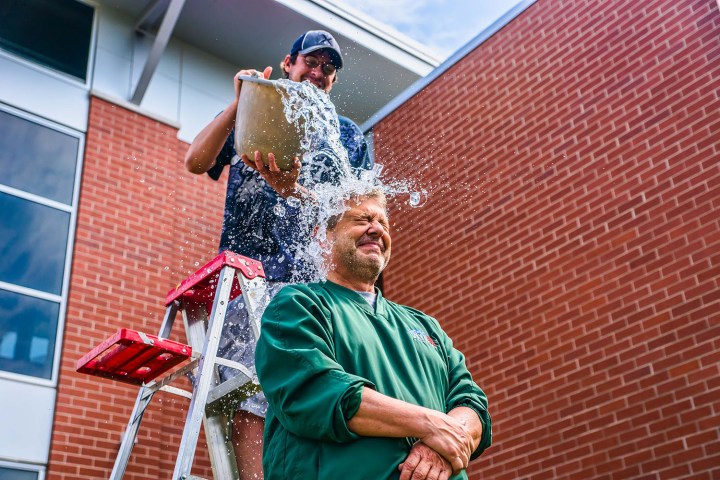
After 17 million videos were uploaded to Facebook, earning 440 million views and some $115 million in donations, the Ice Bucket Challenge helped fund six research studies targeting Lou Gehrig’s Disease. Now, one of those studies, Project MinE, has identified the NEK1 gene and its association with the disease in a discovery that makes the challenge seem like more than just an internet bandwagon phenomenon.
To identify NEK1, more than 80 researchers from twelve countries contributed to Project MinE, sequencing the genomes of 15,000 people with ALS. Although the gene is associated with just three percent of ALS patients, it appears in both familial (inherited) and sporadic (uninherited) cases of the disease, which opens up new targets and opportunities for gene therapies, reports The Guardian. The researchers published their findings in a paper this week in the journal Nature Genetics.
“Thanks to support from the ice bucket challenge, project MinE and dedicated funding agencies, the ALS research community has been able to commence high resolution gene profiling of DNA donated by very large numbers of ALS patients,” researcher at the University of Massachusetts Medical School’s Department of Neurology and first author of the paper, Kevin Kenna, told Digital Trends. “Using these profiles to identify new ALS genes is like searching for a very small number of needles in an enormous hay-stack. A hugely important part of our success in identifying NEK1 was big data analytics and implementing a new computational method to learn and pick out features of ALS related genes.”
ALS, also known as Motor Neurone Disease (MND), is a progressive neurodegenerative disease that leads to loss of control over voluntary motor functions through the death of neurons. The result is often stiff muscles and spasms, with difficulty speaking, swallowing, and breathing. There is currently no known cure for the disease.
The Ice Bucket Challenge became a viral sensation in 2014 and 2015, as friends, celebrities, and even presidents challenged each other to have cold water poured over their heads and donate to an ALS-associated foundation. Although the challenge raised over $115 million worldwide, studies showed most participants didn’t actually donate, leading many to criticize the act as another form of “slacktivism.”
However, the NEK1 gene discovery is an example of how, sometimes, viral trends can have real-world benefits. But that doesn’t mean the work is done.
“We still have a lot to do in identifying other genes that contribute to ALS and this work is currently on-going,” Kenna said. “Our next steps for NEK1 are to use this gene to devise new strategies for drug screening and to generate biological models to study the exact mechanisms through which ALS genes cause disease.”


